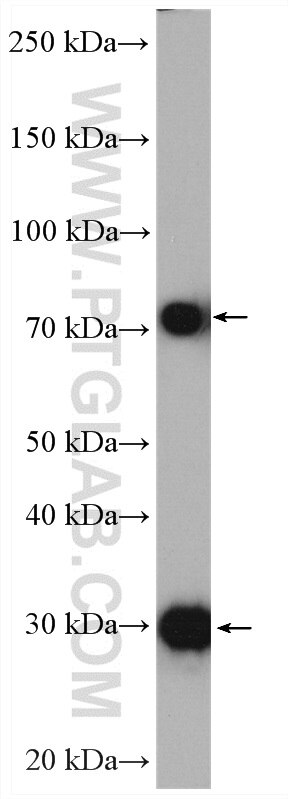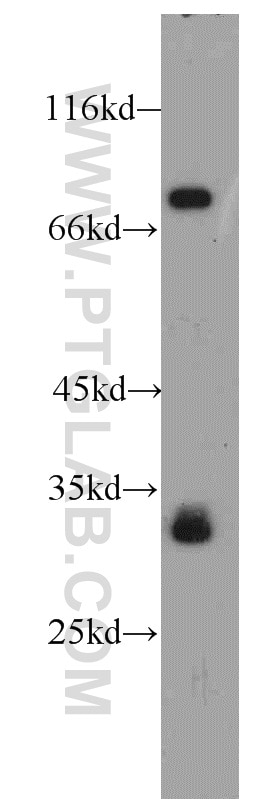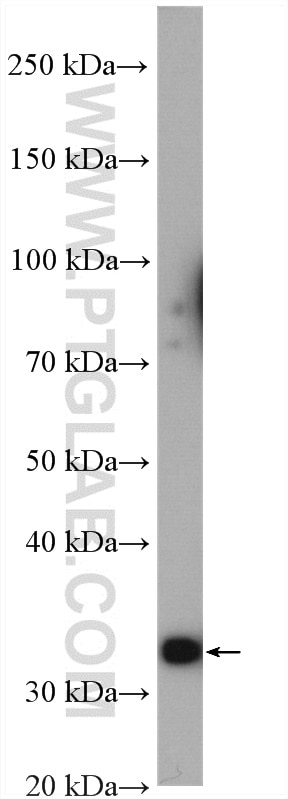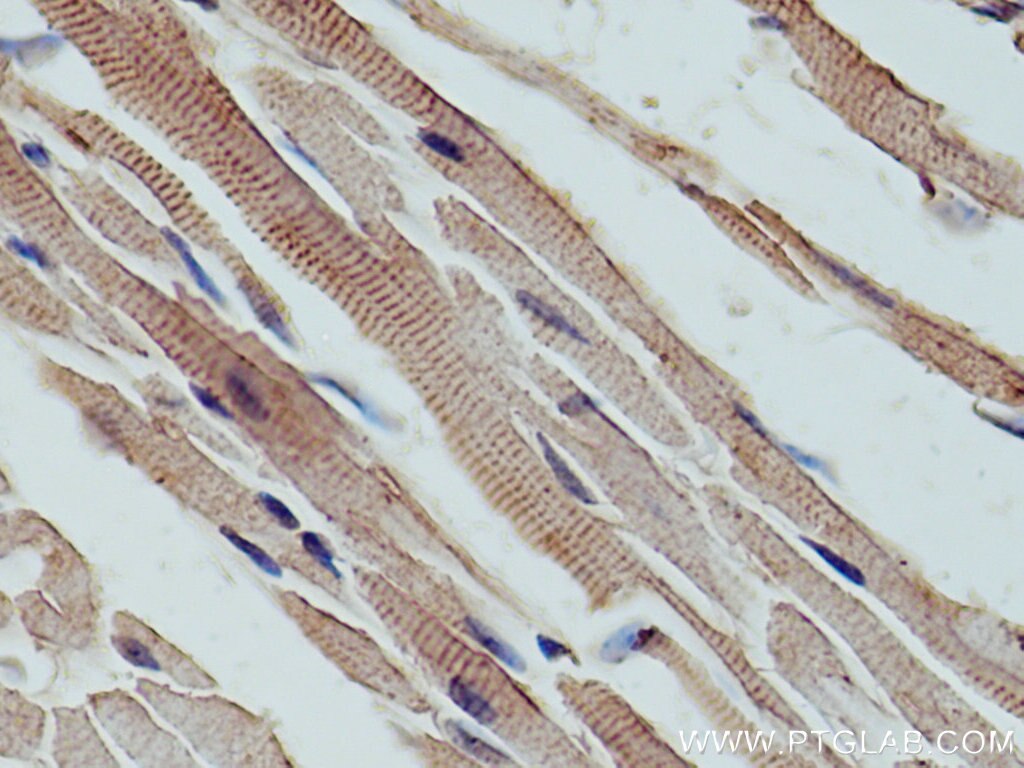LDB3 Polyklonaler Antikörper
LDB3 Polyklonal Antikörper für WB, IHC, ELISA
Wirt / Isotyp
Kaninchen / IgG
Getestete Reaktivität
human, Maus, Ratte
Anwendung
WB, IHC, IF, ELISA
Konjugation
Unkonjugiert
Kat-Nr. : 11004-1-AP
Synonyme
Geprüfte Anwendungen
| Erfolgreiche Detektion in WB | Maus-Skelettmuskelgewebe, humanes Skelettmuskelgewebe, Rattenherzgewebe |
| Erfolgreiche Detektion in IHC | Mausherzgewebe Hinweis: Antigendemaskierung mit TE-Puffer pH 9,0 empfohlen. (*) Wahlweise kann die Antigendemaskierung auch mit Citratpuffer pH 6,0 erfolgen. |
Empfohlene Verdünnung
| Anwendung | Verdünnung |
|---|---|
| Western Blot (WB) | WB : 1:1000-1:5000 |
| Immunhistochemie (IHC) | IHC : 1:50-1:500 |
| It is recommended that this reagent should be titrated in each testing system to obtain optimal results. | |
| Sample-dependent, check data in validation data gallery | |
Veröffentlichte Anwendungen
| WB | See 3 publications below |
| IHC | See 1 publications below |
| IF | See 1 publications below |
Produktinformation
11004-1-AP bindet in WB, IHC, IF, ELISA LDB3 und zeigt Reaktivität mit human, Maus, Ratten
| Getestete Reaktivität | human, Maus, Ratte |
| In Publikationen genannte Reaktivität | human, Maus |
| Wirt / Isotyp | Kaninchen / IgG |
| Klonalität | Polyklonal |
| Typ | Antikörper |
| Immunogen | LDB3 fusion protein Ag1417 |
| Vollständiger Name | LIM domain binding 3 |
| Berechnetes Molekulargewicht | 32/78 kDa |
| Beobachtetes Molekulargewicht | 32 kDa, 78-80 kDa |
| GenBank-Zugangsnummer | BC010929 |
| Gene symbol | LDB3 |
| Gene ID (NCBI) | 11155 |
| Konjugation | Unkonjugiert |
| Form | Liquid |
| Reinigungsmethode | Antigen-Affinitätsreinigung |
| Lagerungspuffer | PBS with 0.02% sodium azide and 50% glycerol |
| Lagerungsbedingungen | Bei -20°C lagern. Nach dem Versand ein Jahr lang stabil Aliquotieren ist bei -20oC Lagerung nicht notwendig. 20ul Größen enthalten 0,1% BSA. |
Protokolle
| PRODUKTSPEZIFISCHE PROTOKOLLE | |
|---|---|
| WB protocol for LDB3 antibody 11004-1-AP | Protokoll herunterladen |
| IHC protocol for LDB3 antibody 11004-1-AP | Protokoll herunterladenl |
| STANDARD-PROTOKOLLE | |
|---|---|
| Klicken Sie hier, um unsere Standardprotokolle anzuzeigen |
Publikationen
| Species | Application | Title |
|---|---|---|
Hum Mol Genet α-Actinin-3 deficiency alters muscle adaptation in response to denervation and immobilisation. | ||
Hum Mol Genet Analysis of the ACTN3 Heterozygous Genotype Suggests That α-Actinin-3 Controls Sarcomeric Composition and Muscle Function in a Dose-Dependent Fashion. | ||
NPJ Precis Oncol Identification of novel prognostic and predictive biomarkers in salivary duct carcinoma via comprehensive molecular profiling | ||
J Cell Mol Med Identification of the Hub Gene LDB3 in Stanford Type A Aortic Dissection Based on Comprehensive Bioinformatics Analysis |





